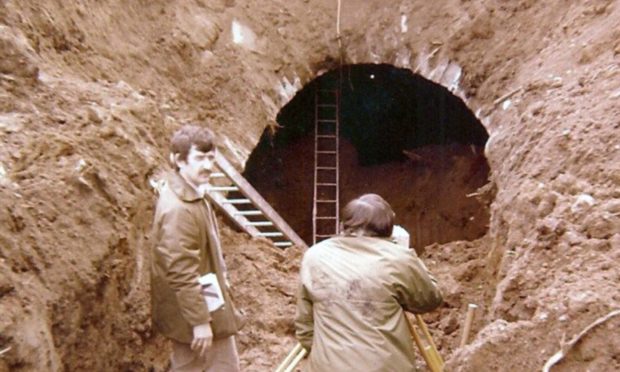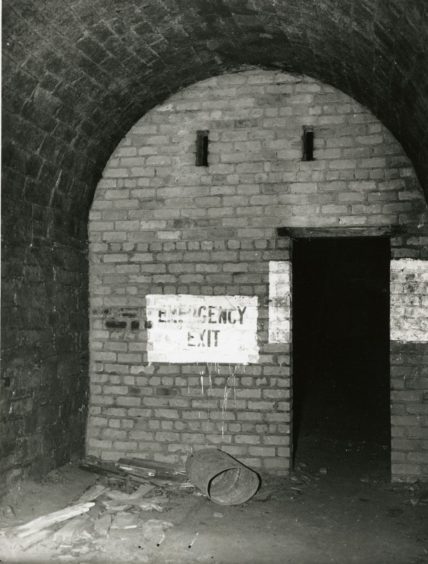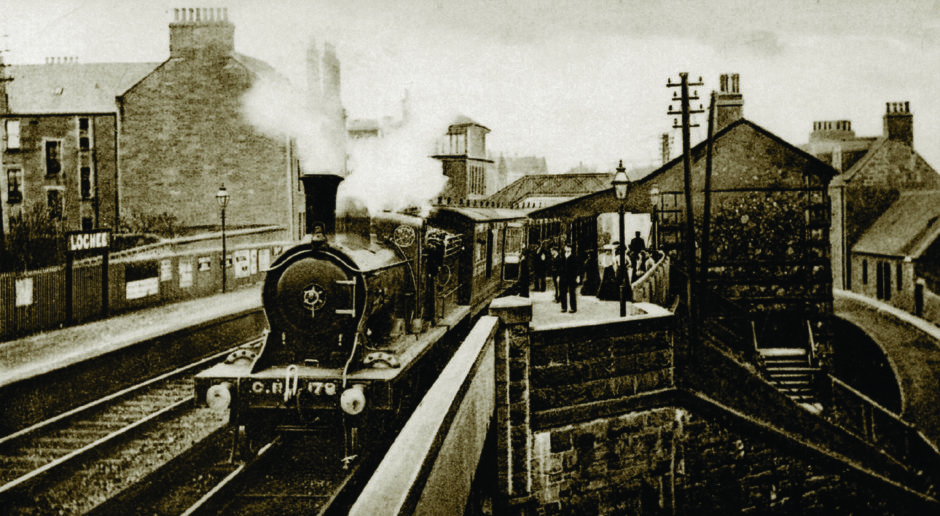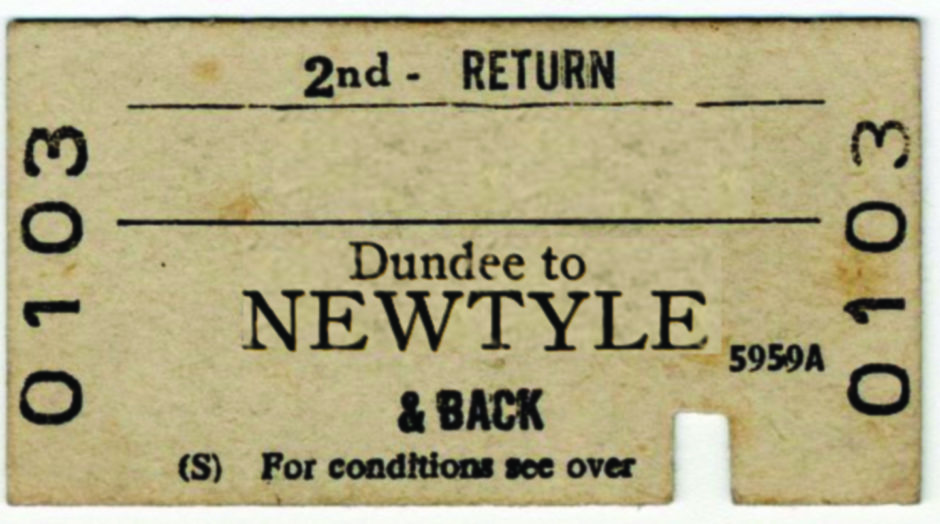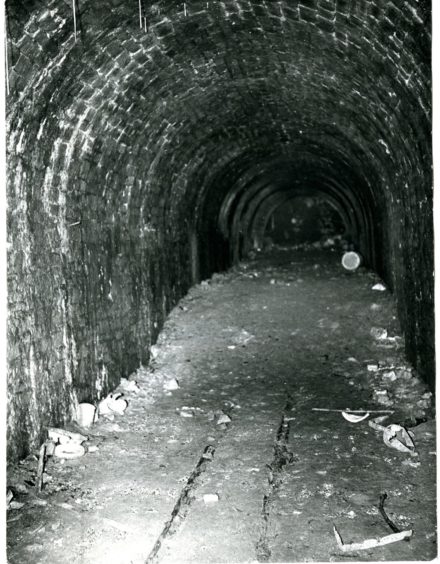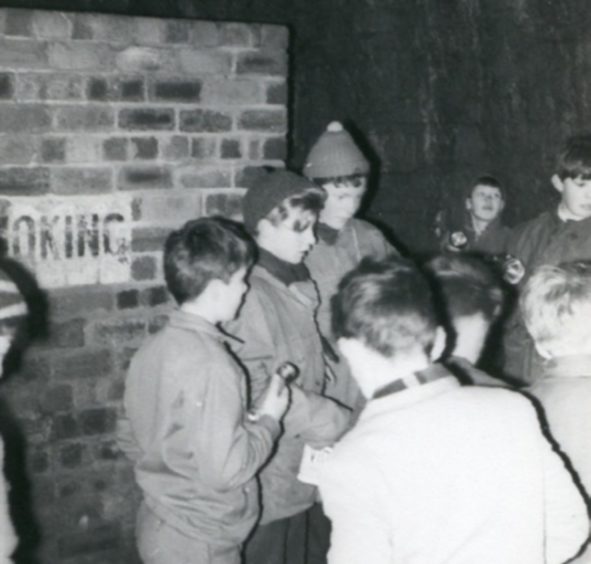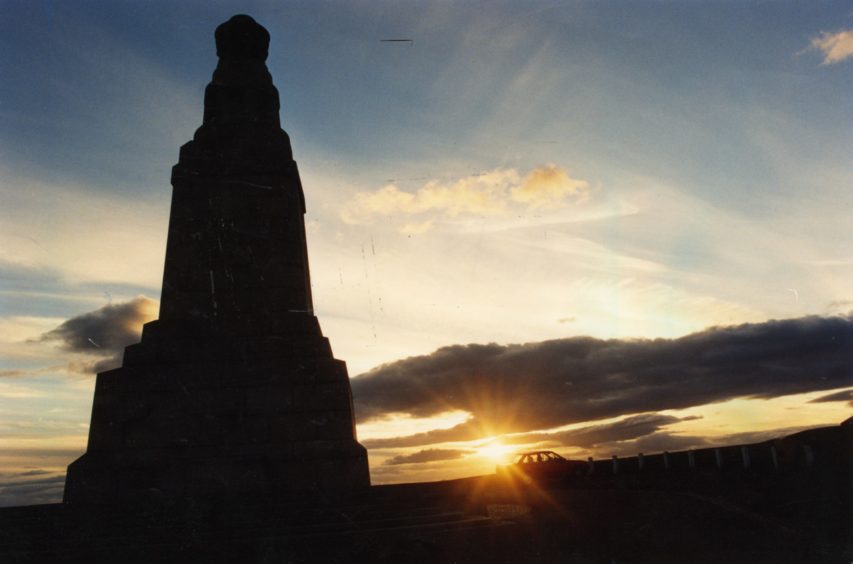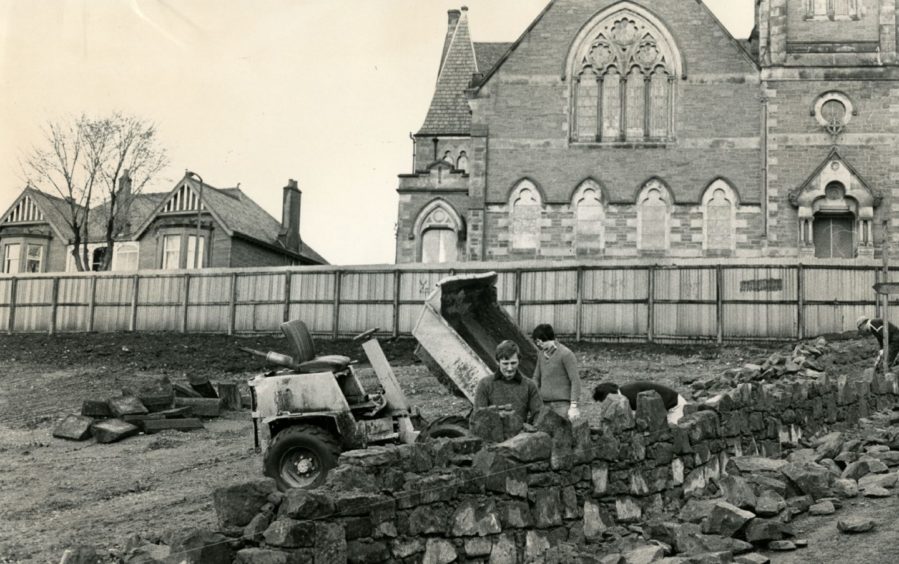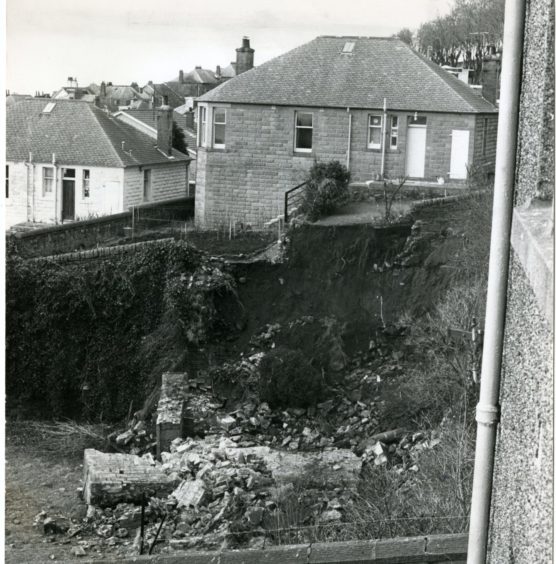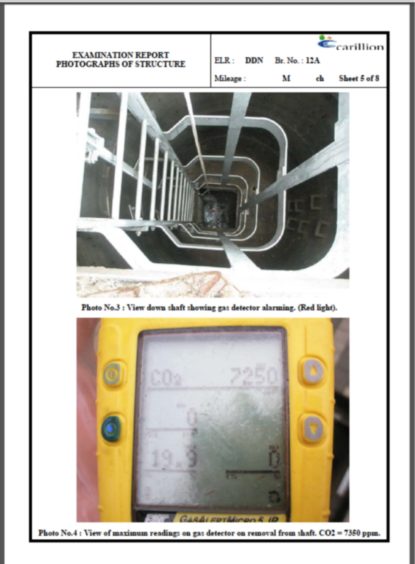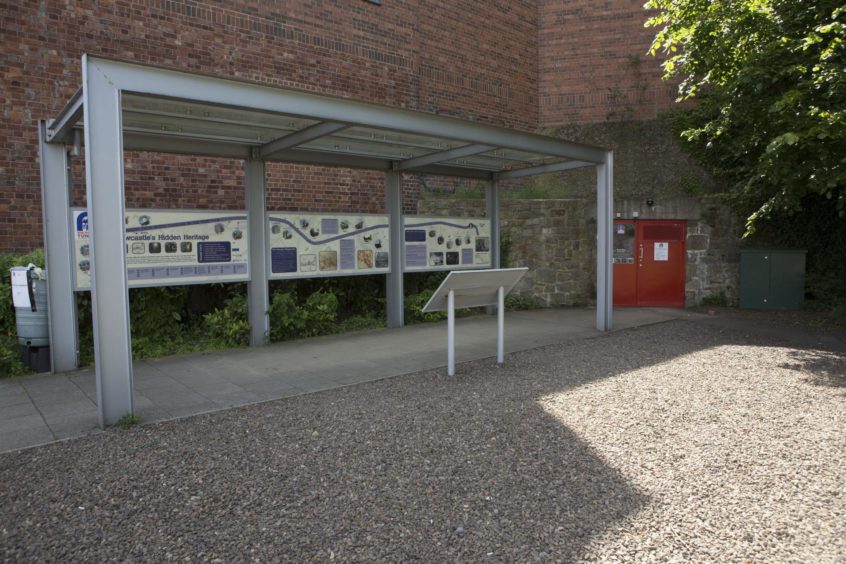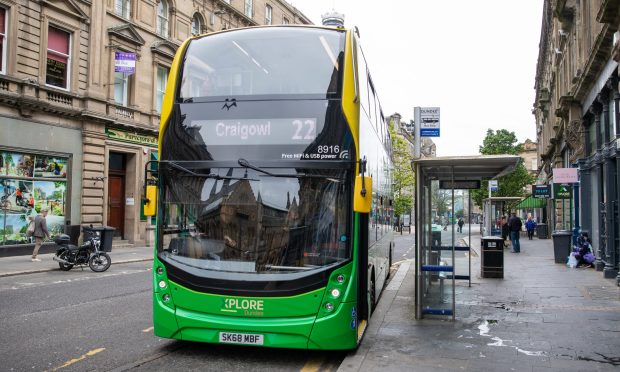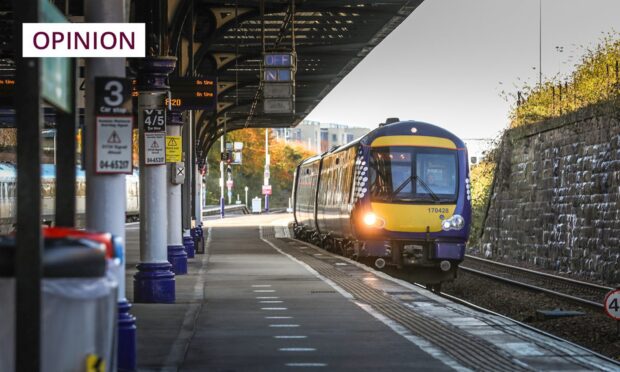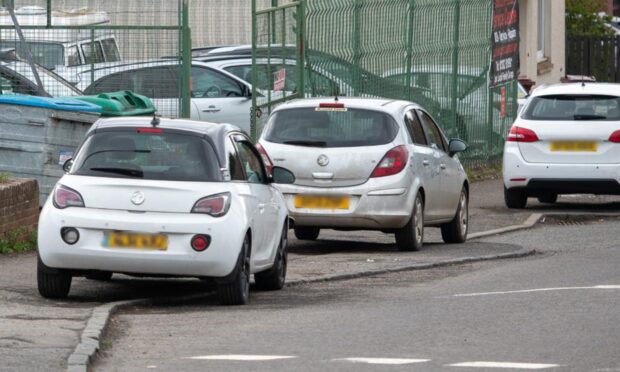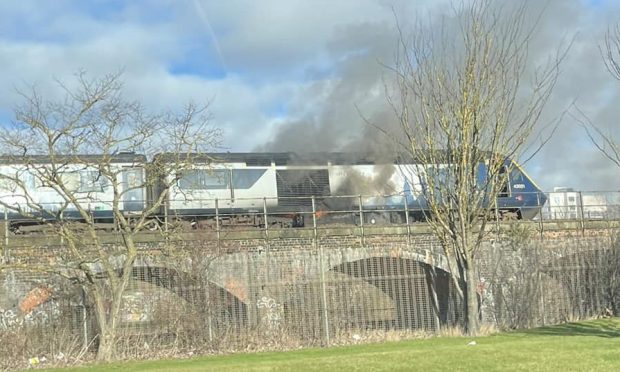Dundee Law boasts a tunnel which was carved though the hill in the early 19th century. Blocked up in the 1980s, there are hopes it might be given an exciting new lease of life, discovers Gayle Ritchie.
Railway track, air raid shelter and mushroom factory – Dundee’s Law Tunnel has had many uses.
Opened in 1831 as part of the Dundee and Newtyle Railway, it was a feature of the city’s landscape for 150 years.
Over the last few decades, the 330m tunnel has acted as a playground for adventurers and ghost-hunters galore who crawled through gaps into the structure to explore.
The two main entrances were blocked off in the 1980s after fears over safety were raised and the tunnel was abandoned.
It lay there, unloved and forgotten, until community members started campaigning to reopen it as a world-class tourist attraction.
However the discovery of harmful gases which prevented access for those without safety gear has resulted in any plans for the disused tunnel being put on the back burner.
But that doesn’t mean the campaign has been forgotten – far from it.
Campaigners, inspired by similar railway tunnel projects across the UK, are still hopeful that one day, the Law Tunnel might be unlocked as one of Dundee’s finest hidden treasures.
Railway
The story of the Law Tunnel begins in the late 1820s and it’s inextricably linked to one of Scotland’s very first railways – the Dundee and Newtyle Railway (D&N).
This was the first passenger railway in the north of Scotland and the first not to rely on coalfields for the bulk of its traffic.
The D&N railway had several unusual features in its journey across the considerable heights of the Sidlaws.
Rather than going round them, engineer Charles Landale decided on a policy of “up and over”, and this resulted in three inclines – at Dundee Law, Balbeuchly and Hatton.
The inclines were worked by stationary steam engines while coaches and wagons were pulled by horses over level stretches of line.
Later, steam locomotives – the first in Scotland – were used, although horses provided back-up if they broke down.
The construction of the railway was complicated by the decision to build a tunnel through the Law, which was finally completed in 1829, allowing the 11-mile line – and of course the tunnel – to open to traffic on December 16 1831.
Next year will be its 190th anniversary.
Colin Donald from the Friends of Dundee Law Project, said the tunnel was required because it was “deemed more efficient” to drag the carriages up the hill and gain momentum from that high point to allow the trains to head to Newtyle.
“The people who decided this also expected that the hard rock of the Law would allow them to pay for the tunnel by selling off the rock quarried while digging the tunnel,” he said.
“Alas, that was not to be because they had misunderstood the geology and nature of the hill and its ‘crag-and-tail’ structure.
“This meant the east of the hill was composed of soft, sedimentary rock.
“Not only could they not sell the stone but it meant a lot more money had to be spent to make the tunnel structurally safe.”
The tunnel was only in use for 30 years. Uneconomic and time-consuming to operate, it closed in 1861 when the line deviated via Lochee.
Mushroom factory
The tunnel was re-opened by the Scottish Mushroom Company for growing purposes in 1898, but the company went into liquidation in 1902.
Five years later, botanist Sir Patrick Geddes, a pioneer of the Green movement and modern town planning, drew up plans for the tunnel as a fernery, along with elaborate plans for the surrounding area.
Air-raid shelter
It was converted to an air-raid shelter during the Second World War before its entrances at Kinghorne Road and Keats Place were blocked off in 1983.
“It was said to be very damp and cold and wasn’t much used, if at all,” said Colin.
“It was still open enough – albeit not officially – for generations of local children to climb into it and gained a reputation as a place to be dared into. I’ve spoken to many who remember it well.”
Tunnel tales
Railway enthusiast Elliott Simpson recalls exploring the disused Law Tunnel in the 1960s.
“The south entrance was still open, tucked in below a wall at the top of Upper Constitution Street,” he says, on his website, forgottenrelics.co.uk
“It then ran under some allotments and between houses on the north side of Law Crescent.
“It was in some nearby allotments that my friend and I found the north end of the tunnel.
“It had been covered with rubble but over the years the ground level had lowered, revealing the top of the arch – and that gap was wide enough for us to get inside.”
“A few minutes later we were at the south end, congratulating ourselves.”
Elliott returned a few weeks later with a group of children from the Broughty Ferry Crusader Bible Class, where he was a leader.
As they were crawling into the tunnel, three local lads came to see what was going on and then joined them on their adventure.
It had been covered with rubble but over the years the ground level had lowered, revealing the top of the arch – and that gap was wide enough for us to get inside.”
“The mound of rubbish inside quickly descended to the original tunnel floor level,” says Elliott.
“Rails were still in place, said to have been laid for a narrow gauge track way used by a company which grew mushrooms in the tunnel.
“Hanging from the masonry lining were hundreds of stalactites.
“The tunnel will remain in the memory of many local explorers for whom it offered exciting underground adventures.”
Urban myth
Contrary to urban myth, the Law is not an extinct volcano.
Rather, it was formed from volcanic rock that flowed from a volcano to the west of the area.
This was then trapped under ice, higher than the Law itself, thousands of years ago.
Blocked up
After the two main entrances were blocked up, housing was built over the Law Tunnel.
It’s maintained by Highways England Historical Railways Estate (HRE) and owned by the Secretary of State for Transport.
It is checked inside every three years, with an over-ground visual inspection annually.
A spokesman from The Law Tunnel Facebook page said: “The tunnel is still one of the best preserved tunnels in the heritage assets portfolio though it has unique access and air quality issues.
“The entrance is blocked at the top end by flats and rubbish, and it’s accessible only via a manhole cover and shaft on the south side.”
The spokesman said future plans might involve the tunnel being transferred to the local authority but that there might be issues with future maintenance costs.
“There has been no dialogue between the council and Highways England (or its predecessor the Highways Agency) so far,” he said.
“Should such a dialogue begin, negotiations would no doubt centre around putting in a second entrance and clearing the infill rubbish that is continuing to cause air quality issues.”
A Highways England spokesperson said: “The tunnel is among the 3,000-plus former railway structures maintained by Highways England Historical Railways Estate (HRE) on behalf of owners, the Department for Transport.
“The tunnel has been blocked at both ends since the 1980s and the land here has been developed.
“We installed a pipe in the tunnel a few years ago to allow us to force air through it to improve air quality when examining the structure.
“For any future plans to reopen the tunnel, ownership would have to be transferred to the local authority as this would fall outside our maintenance remit.”
Tunnel projects
While there are clearly issues surrounding the Law Tunnel project – and a good few major hurdles to be overcome – similar projects in Wales and Newcastle have offered hope and inspiration for Dundee campaigners.
The Victoria Tunnel runs beneath the city of Newcastle-Upon-Tyne from the Town Moor down to the River Tyne and is now one of the area’s must-see visitor attractions.
The tunnel was built in 1842 to transport coal from Leazes Main Colliery to the river, ready for loading onto ships.
In 1939, it was converted into an air-raid shelter. It closed in the 1860s.
In 2008, the Victoria Tunnel was restored and opened for guided tours by Newcastle City Council with funding from the Heritage Lottery Fund and TyneWear Partnership.
Since 2010 the Ouseburn Trust ouseburntrust.org.uk has operated guided tours, with volunteer guides.
In Wales, the Rhondda Tunnel Society has a vision: to re-open the disused Rhondda and Swansea Bay Railway Tunnel, reconnecting the communities of the Rhondda and Afan Valleys as a pedestrian and cycling route.
The 1.8 mile tunnel, which runs to Blaencwm, was previously used by trains taking coal from Rhondda mines to the ports of Swansea Bay, but closed in 1968 and the entrances were buried.
The Rhondda Tunnel Society, rhonddatunnelsociety.co.uk, was formed in 2014 with the initial aim of siting the long-lost tunnel portal stone in a location close to the entrance of the disused tunnel at Blaencwm.
Thanks to social media, the word got out and more and more people wanted to get on board – including Hollywood star Michael Sheen.
He visited in 2015 and said: “The potential for the tourist industry here is enormous.”
The dream is to re-open the Rhondda Tunnel in its entirety.
However, the reality is that that’s several years and millions of pounds away.
For a start, ownership is an issue. In 2010, the tunnel was transferred to Highways England.
The hope is that ownership will be transferred to the two councils and the Welsh government. Then the portals have to be dug out – an engineering challenge.
Hopes and hurdles
When artist Deirdre Robertson began campaigning to have the Law Tunnel re-opened in 2014, she was hopeful it might be a “world-class visitor attraction” one day.
However, the major issue, besides poor air quality, is access.
If these issues can be overcome, who knows what the future might hold.
It’s a dream which could become a reality and it’s a project which many people in Dundee and beyond are on board with.
